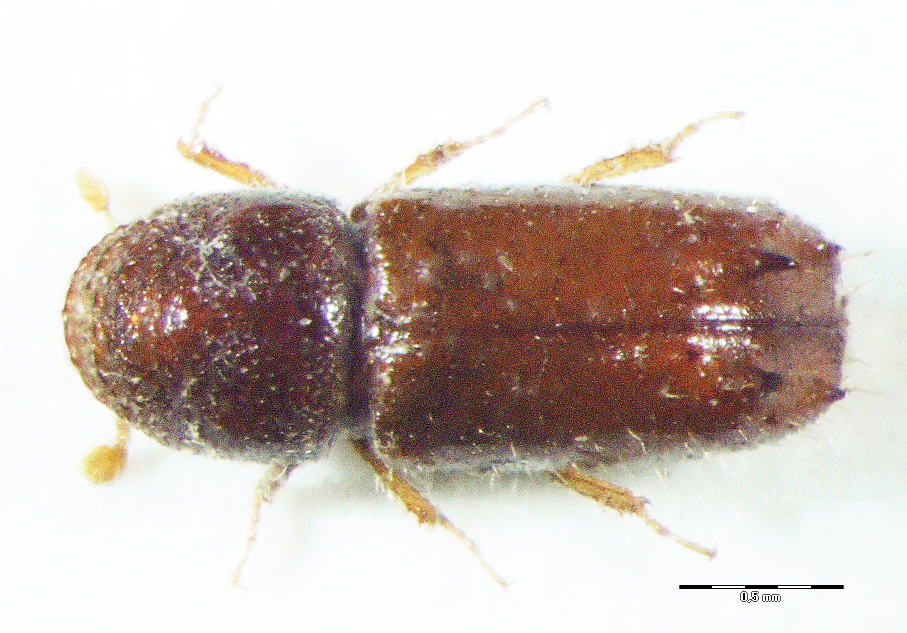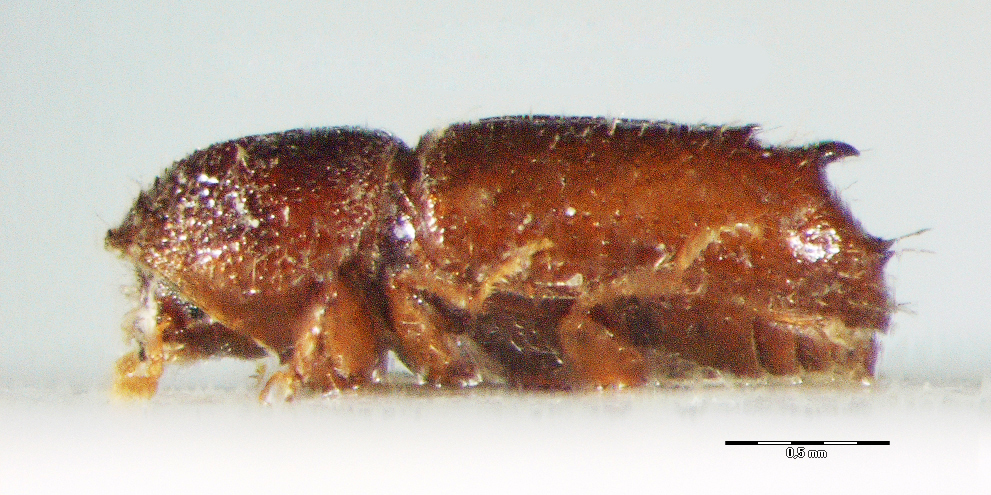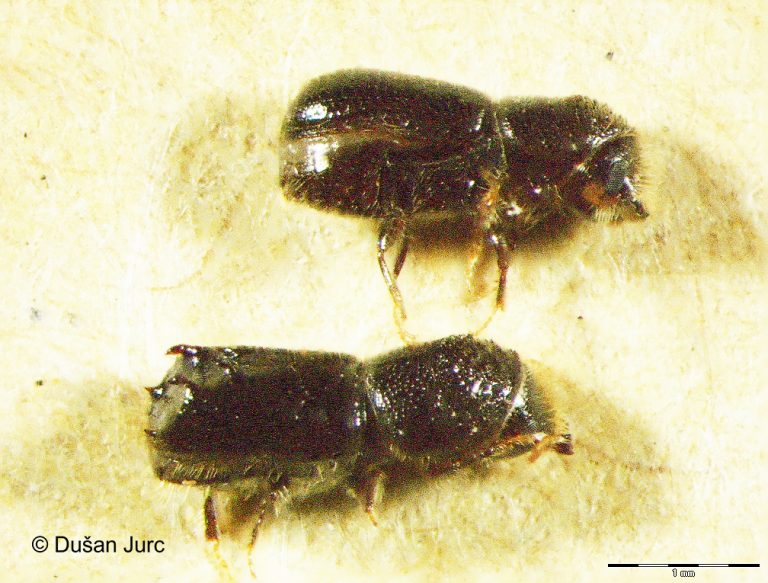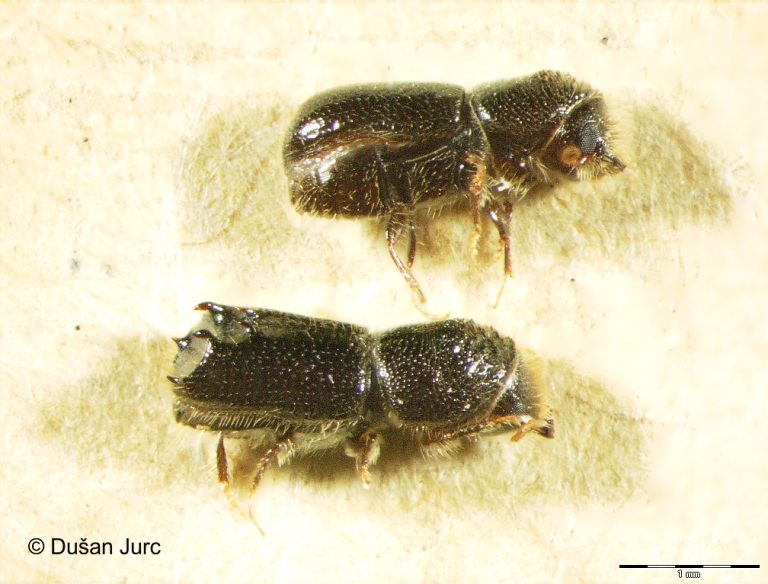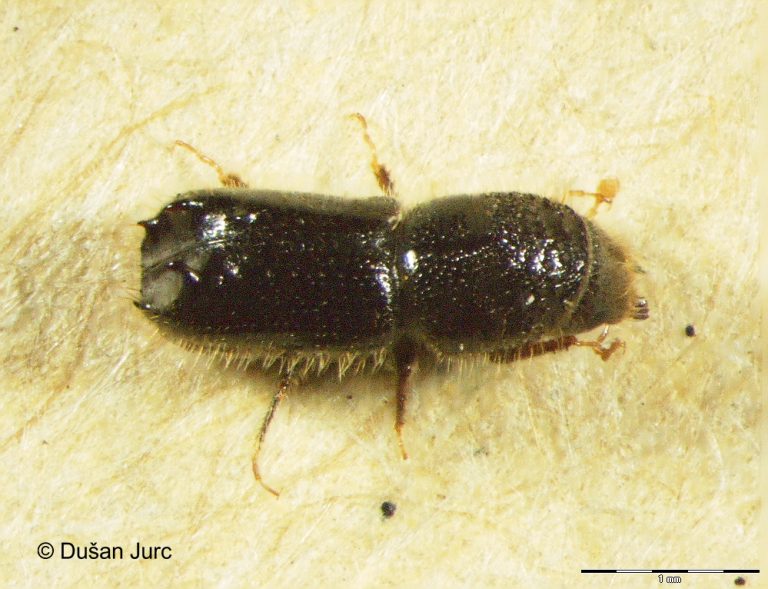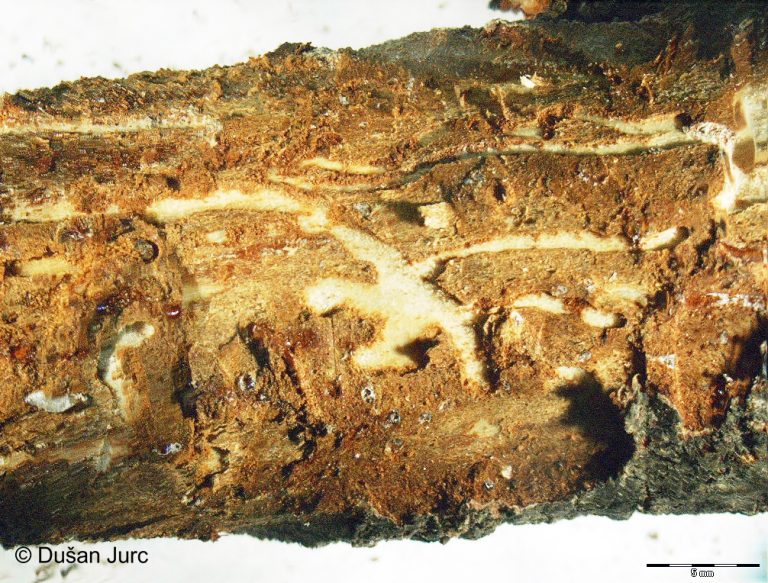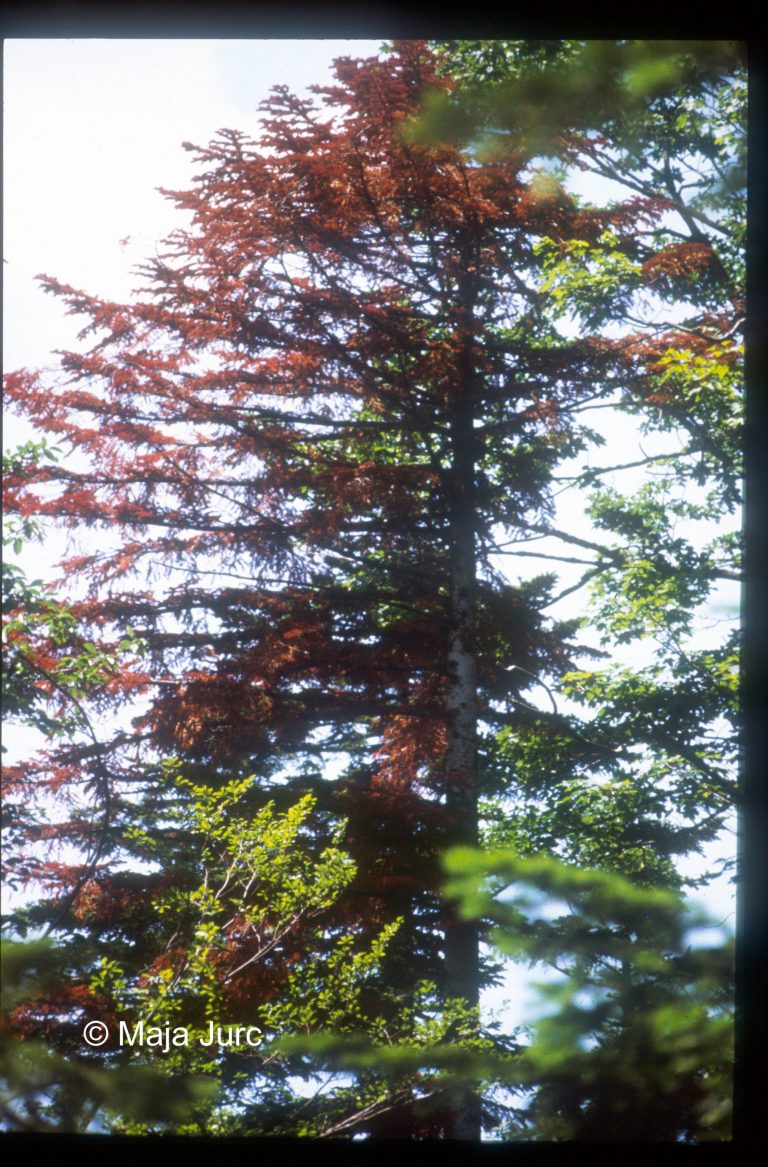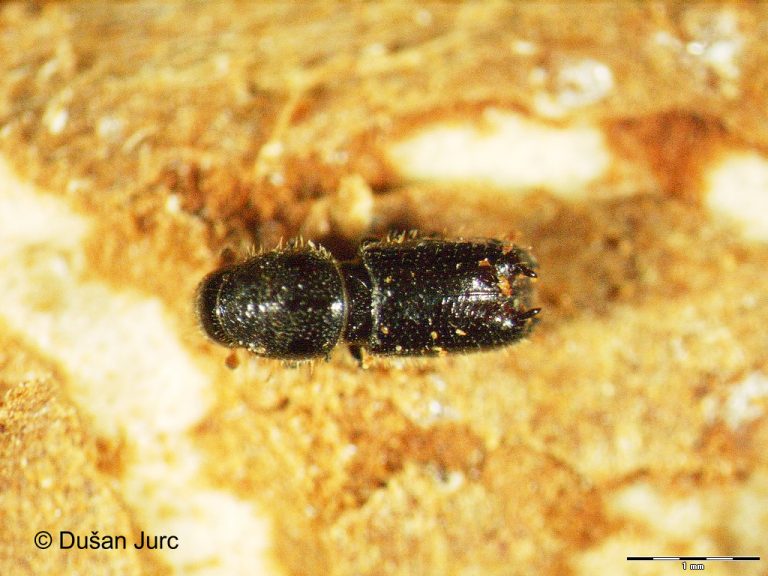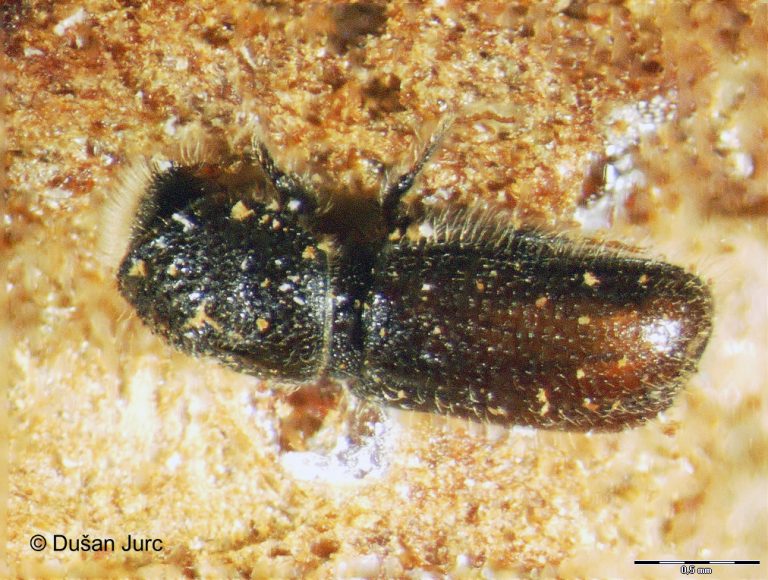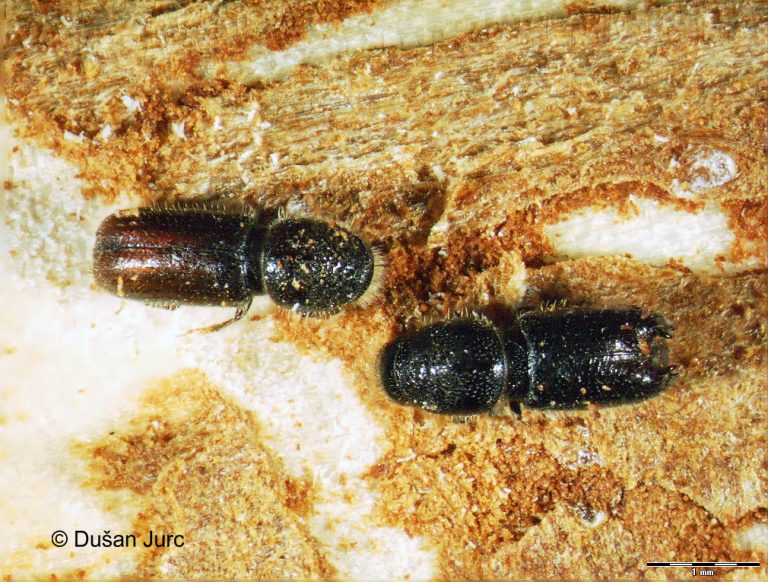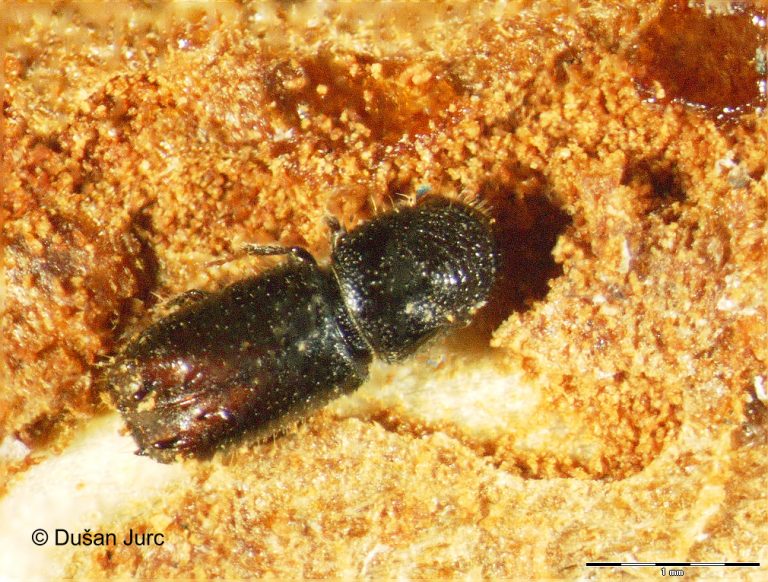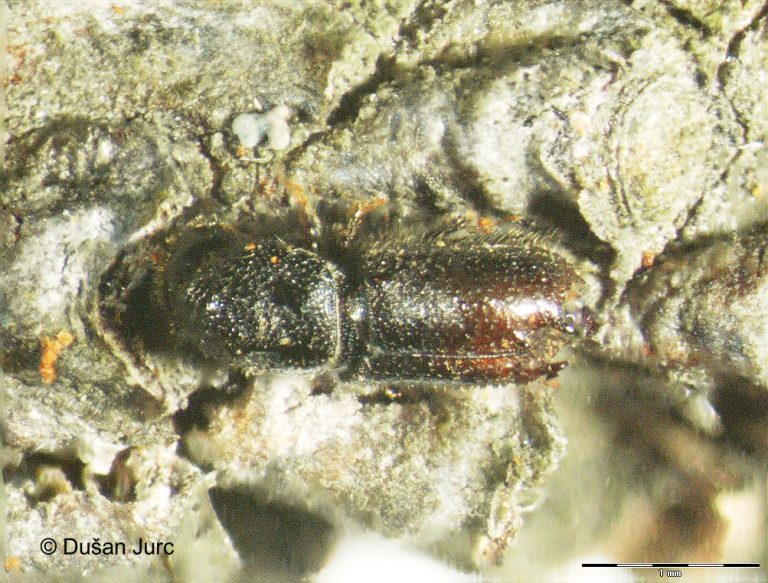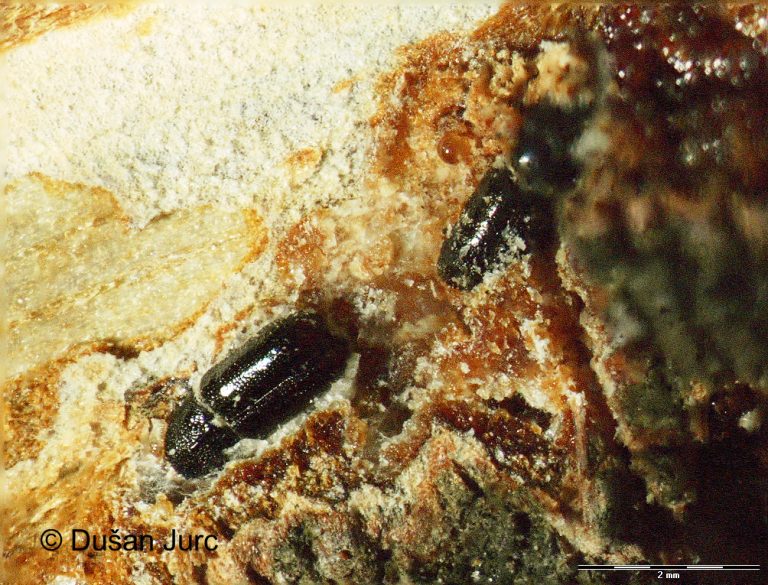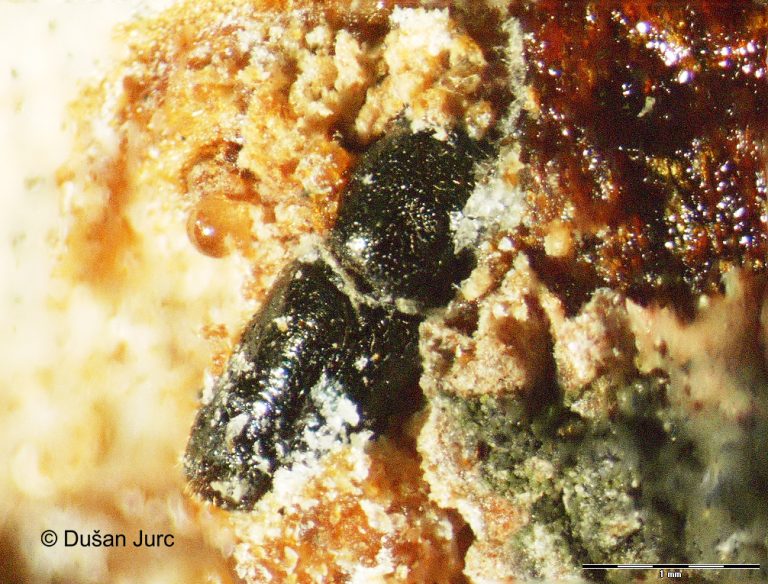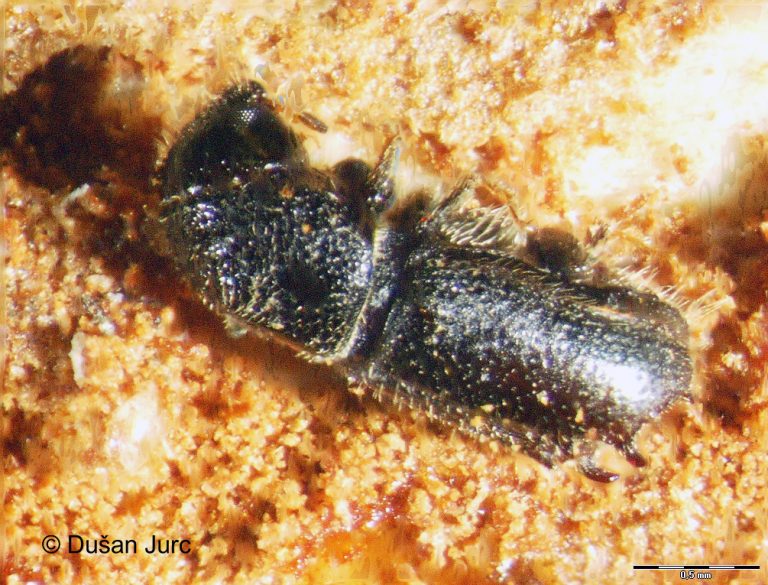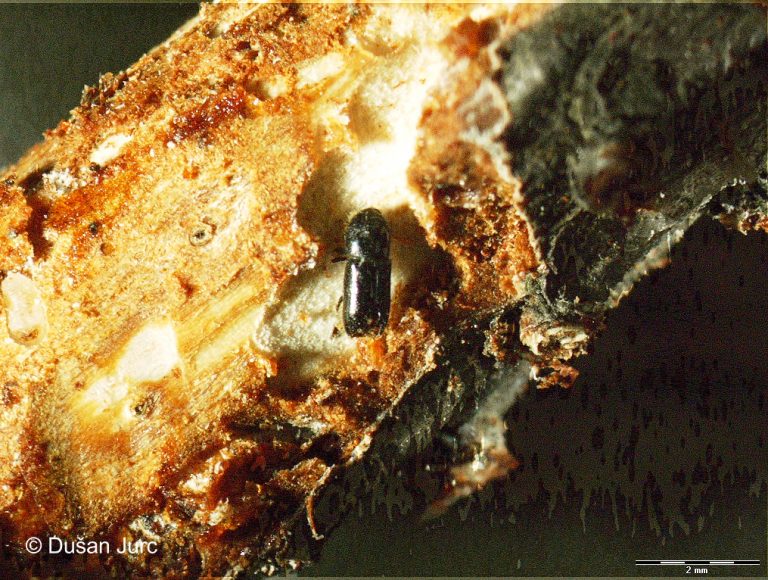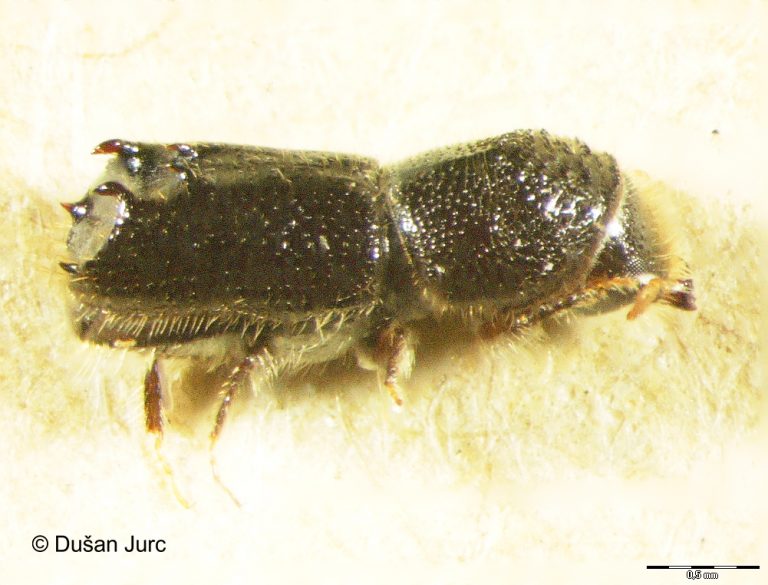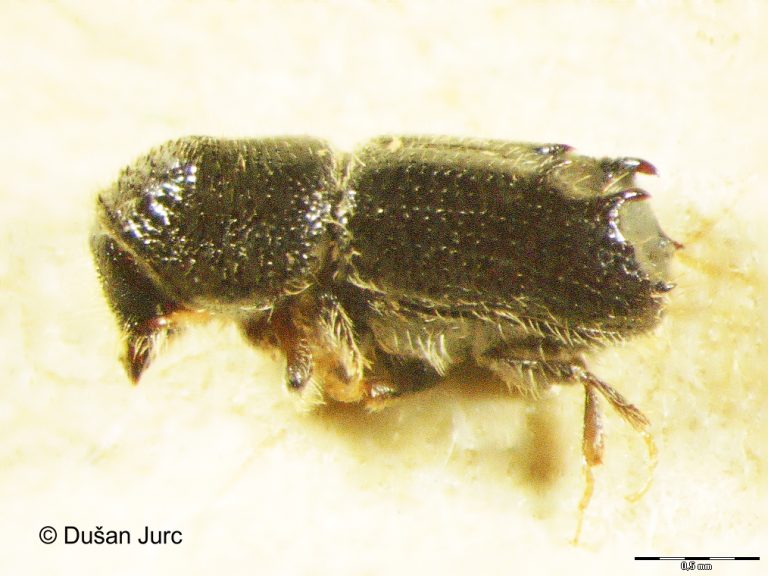30.06. Pityogenes quadridens (Hartig, 1834)
Presence
E: AU BE BH BU BY CR CT CZ DE EN FI FR GB GE GR HU IR IT LA LS LT MC MD NR NT PL SK SL SP ST SV SZ UK YU
A: ES FE KZ TR WS
Figure 140: Pityogenes quadridens, dorsal, lateral (Photo: Maja Jurc)
Older catalogs and keys – citations of name
Grüne 1979: Pityogenes quadridens Hartig, 1834; Freude, Harde, Lohse 1981: Pityogenes quadridens Hartig; Pfeffer & Knížek 1993: P. quadridens (Hartig, 1834); Pfeffer 1995: P. quadridens (Hartig, 1834).
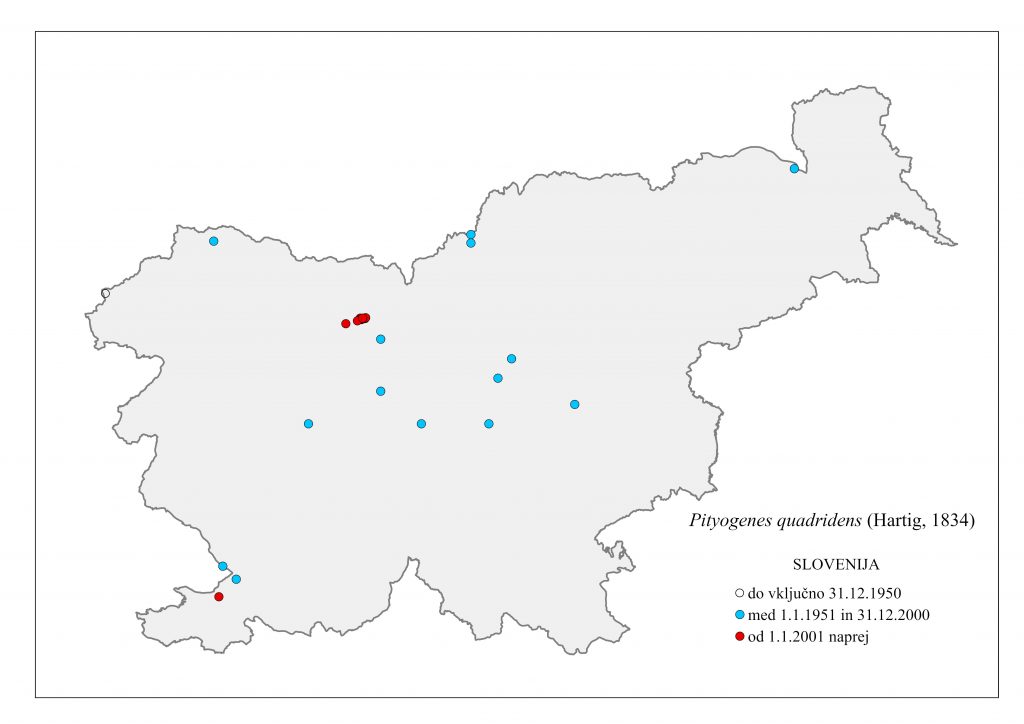
Figure 141: Pityogenes quadridens, distribution map according to historical and recent data
Ecology and presence in Slovenia
The species occurs in central and northern Europe, the Balkans, the Caucasus and Siberia. In Slovenia, it is more common in Gorenjska, but occurs sporadically elsewhere (Figure 141). Hosts include Pinus sylvestris, P. mugo, P. heldraichii, P. nigra, P. strobus, P. peuce, Picea spp., Abies spp., Larix spp. and Pseudotsuga menziesii. In Slovenia, it has been most commonly found on Pinus sylvestris, more rarely on P. nigra and P. mugo. It produces up to two generations per year. Polygamous species, the tunnel system is star-shaped, with 2-7 maternal galleries. Adult size is 1,6-2,2 mm. The male has 2 larger denticles on the elytra apex on each side, the upper one curved downwards, the lower one conical. The sutural denticle is very small or even missing. Females have only small humps instead of denticles (Figure 140). P. quadridens is a distinctly secondary species with no economic importance. Saproxylum. Pheromone: Chalcogran, 1-Hexanol in (Gerken 1977).

